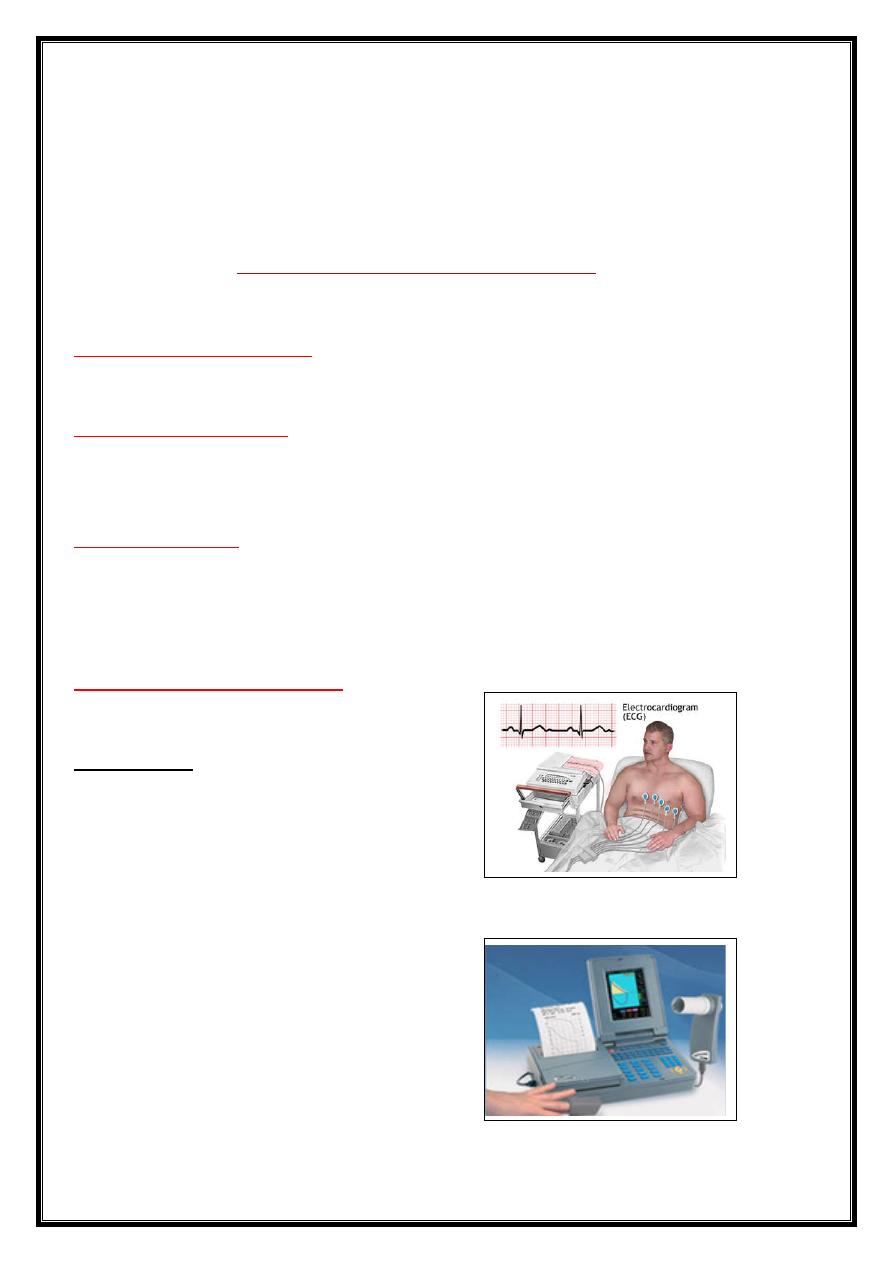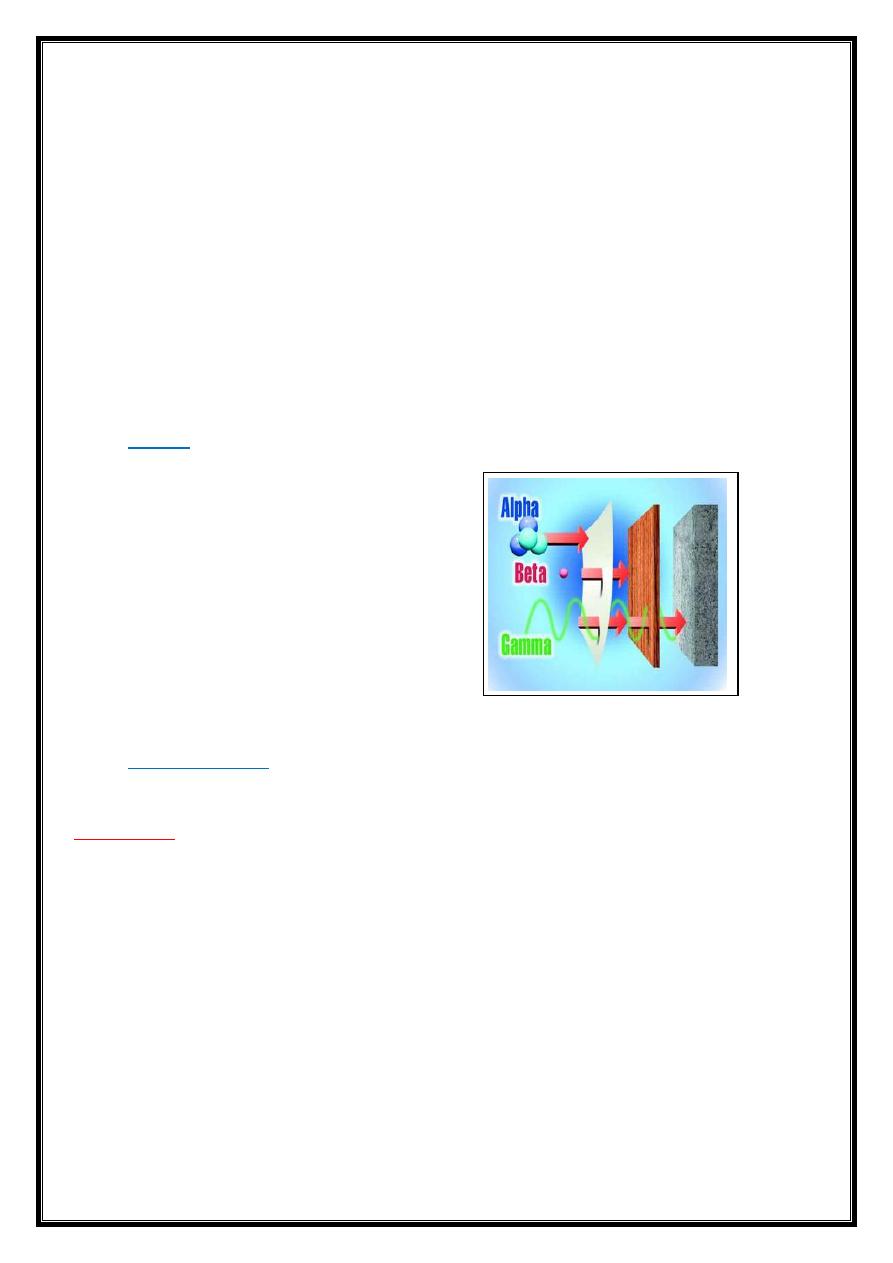
I
CHAPTER –ONE
Thi-Qar university College of medicine
(Academic years 2019-2020)
Terminology, Modeling, and Measurement
-----------------------------------------------------------------------------------------------------------------
Introduction to Medical Physics
Medical Physics : is the application of the concept of physics in medicine
Aims of the Medical physics:
Application of the concepts and methods of physics to understanding the function of
human body in health and disease
1 .Physics of the body
is to understanding physical aspect of the body such as ; forces on and in the body ,
work , energy ,power of the body, heat ,blood flow , respiration , electricity , ,circulation,
and hearing.
2.Application of physics in medicine
a. Medical physics Techniques are used for
a. Diagnostic :
Stethoscope
Manometer (blood pressure )
Sphygmomanometer
Electrocardiograph(ECG)
X- Ray,
Electroencephalograph(EEG)
Electromyography (EMG)
thyroid function using I¹³¹
Computer tomography (CT scan ) ,

II
Ultrasound
Magnetic Resonance Imaging (MRI),
Spirometer to study the function lungs
Audiometer
Laser,
Gamma camera to study the function of kidney ,liver ,and lungs
b. Therapy
Radiotherapy
High voltage
Ultrasound
infrared
Radio frequency
Heating
Laser
c. Patient monitoring
ECG , spirometer , blood pressure ,and thermometer
Terminology:
The field of medical physics overlaps the two very large fields of medicine and physics.
The term medical physics refers to two major areas:
-
1. The applications of physics to the function of the human body in health and disease.
This could be called the physics of physiology.
2. The applications of physics in the practice of medicine.
This includes such things as the physics of the stethoscope, the tapping of
the chest
(percussion
), and the medical applications of
LASER,
ultrasound, radiation,
and so forth.

III
Physical medicine:
It's the branch of medicine that deals with diagnosis and treatment of
disease and injury by means of physical agents such as
manipulation, massage, exercise,
heat, and water.
Physical therapy:
It's the treatment of disease or bodily weakness by physical means
such as
massage and gymnastic
rather than by
drugs.
The field of medical physics has several subdivision:
Radiological physics:
This involves the applications of physics to radiological
problems and includes the use of radiation in the
diagnosis and treatment of disease as well as the use of radionuclides in medicine
(nuclear medicine).
Health physic:
This involves
radiation protection
of patients, workers, and the
general public. Also includes radiation protection outside of the hospital such as around
nuclear power plants and in industry.
Medical engineering:
This field of physics, deals with the electronics of the medical
instrumentation.
Bioengineering:
This word has a much broader meaning. Bioengineering involves the
application of any engineering to any biological area.
Modeling:
Models are of two types:
o Models involving another physical phenomenon to understand
Our subject.
For Example: -
In many ways the eye is analogous to a camera; however, the analogy is poor when
the film, which must be developed and replaced, is compared to the retina, the light
detector of the eye.
# Mathematical model
( equation)
to describe the physical behavior of some
systems. In the everyday world of physics we have many such equations. Some are of such
general use that they are referred to as
laws
For Example: -
The relationship between force F, mass m, and acceleration a, usually written as
F=ma, is known a
s Newton's second law.

IV
HOMEOSTASIS REGULATION – POSITIVE AND NEGATIVE
FEEDBACK
Many function of the body are controlled by homeostasis "which is analogous to
feedback control "in engineering .In it , some of what is being produced is used as
a signal to control the production to the desired level.
I
f the system is designed so that an increase in the amount that is fed back decreases the production,
and a decrease in the sample increases the production, the fed back is (NAGATIVE
)
.
NEGATIVE FEED BACK
The dynamic stability of homeostasis is mostly maintained by physiologic processes called
negative feedback
A good example of a negative feedback mechanism is a home thermostat (heating system). The
thermostat contains the receptor
(thermometer)
and control center. If the heating system is set at
70 degrees Fahrenheit, the heat
(effector)
is turned on if the temperature drops below
70 degrees
Fahrenheit. After the heater heats the house to 70 degrees Fahrenheit, it shuts off effectively
maintaining the ideal temperature.
EXAMPLES OF A FEEDBACK MECHANISM IN OUR BODY.
1. When the blood pressure all of a sudden increases or reduces, it starts a series of responses
that aims to bring the blood pressure to regular levels.
2. When thyroxine secretion is more, it prevents the secretion of thyroid stimulating hormone
from pituitary so that, thyroxine is not produced from the
.
3. In the regulation of
CO2
concentration, a high
CO2
concentration increase pulmonary
ventilation = decrease
CO2
concentration, so high concentration first act on leads to decrease
concentration which is the initiating stimulus and vice versa
4.When blood sugar rises, receptors in the body sense a change . In turn, the control center
(pancreas) secretes insulin into the blood effectively lowering blood sugar levels. Once blood
sugar levels reach homeostasis, the pancreas stops releasing insulin.

V
POSITIVE FEEDBACK MECHANISM
A positive feedback mechanism is the exact opposite of a negative feedback mechanism. With
negative feedback, the output reduces the original effect of the stimulus. In a positive feedback
system, the output enhances the original stimulus.
EXAMPLES OF A FEEDBACK MECHANISM IN OUR BODY.
1- Child birth. During labor, a hormone called oxytocin is released that intensifies and speeds up
contractions. The increase in contractions causes more oxytocin to be released and the cycle goes on
until the baby is born. The birth ends the release of oxytocin and ends the positive feedback
mechanism.
2- Blood clotting. Once a vessel is damaged, platelets start to cling to the injured site and release
chemicals that attract more platelets. The platelets continue to pile up and release chemicals until a
clot is formed.
3- Sucking reflex - baby sucking milk , impulses to hypothalamus that will send impulse to post
pituitary to secrete the oxytocin which will increase milk secretion .
The negative fed back produces a stable control, while "POSITIVE" fed back ,in which a change in
the sample causes a change in the same direction, produces an unstable control
Measurement:
One of the main characteristics of science is its ability to reproducibly measure quantities of
interest.
The following figure illustrates a few of the common measurements used in the
practice of medicine. Some of these measurements are more reproducible than others.

VI
There are many other physical measurements involving the body and time. We can
divide them into two groups: -
1. Measurements of repetitive processes, such as pulse.
2. Measurements of nonrepetitive processes, such as how long it takes the kidneys to
remove a foreign substance from the blood.
Measurements of the repetitive processes usually involve the number of repetitions per
second, minute, hour, and so forth.
For Example: -
The pulse rate is about 70/min.
The breathing rate is about 15/min.
Nonrepetitive time processes in the body range from the action potential of a nerve cell
(1msec) to the lifespan of an individual.
How To Make a Full Diagnosis?
Today physician can diagnose a disease by using the following information: -
Medical history of the patient.
The findings of the physical examination( for example ,tapping the chest, measure the
pulse rate, breathing rate,,,,,,,)
The results of the clinical laboratory measurements(for example, blood sugar, blood
urea,,,,,etc
)
After a physician has reviewed a patient's medical history, the findings of the physical
examination and the results of clinical laboratory measurement ,he or she must decide if
the patient is ill or not…..
The decisions are two types: -
1. Right decisions.
2.
Wrong decisions
.
It is not surprising that sometimes wrong decisions are made. These wrong decisions are
of two types: -
1. False Positives.

VII
2. False Negatives.
A false positive
error occurs when a patient is diagnosed to have a particular
disease when he or she does not have it.
A false negative
error occurs when a patient is diagnosed to be free of a
particular disease when he or she does have it.
Note: -
In some situations a diagnostic error can have a great impact on a patient's life.
For Example: -
A young woman was thought to have a rheumatic heart condition and spent several
years in complete bed rest before it was discovered that a false positive diagnosis had been
made-she really had arthritis, a disease in which activity should be maintained to avoid joint
stiffening.
In the early stages of many types of cancer it is easy to make a false negative diagnostic
error because the tumor is small. Since the probability of cure depends on early detection of
the cancer, a false negative diagnosis can greatly reduce the patient's chance of survival.
Diagnostic errors (false positives and false negatives) can be reduced by:
1. Research into the causes of misleading laboratory test values.
2. Development of new clinical tests and better instrumentation.
Errors or uncertainties from measurements can be reduced by: -
1. Using care in taking the measurement. 3-Repeating measurements.
2. Using reliable instruments. - -4 Properly calibrating the instruments
